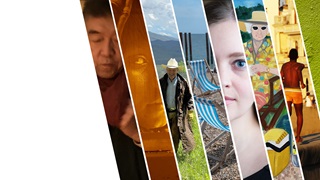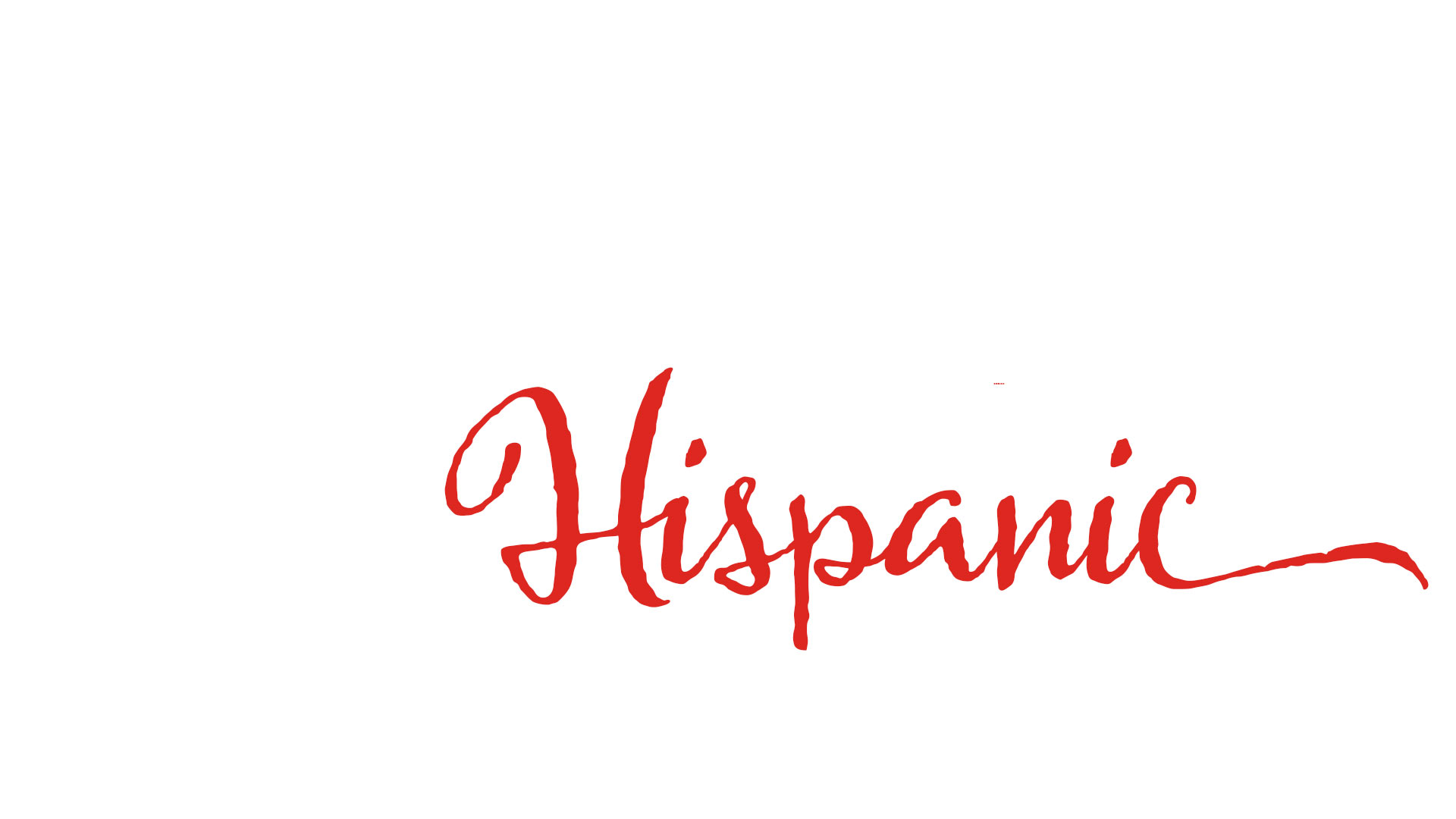
RE
Looking out not in | RE by issue


With fair skin, round eyes and wavy hair, I pass for white. I am not.
I am the descendant of Spanish Conquistadors. A child of Navajos and Apaches. An heir to Mexican ranchers. The progeny of escapees from the Spanish Inquisition.
My family’s blood has been spilled on American soil for over four hundred years, since the time when they first rode on horseback into this yet-to-be-colonized America, killing and breeding with Native American Indians, only to steal and plow their lands.
It is difficult to describe my feelings about being Hispanic. To interrupt a conversation with kids from McAllen who talked disparagingly about migrant Mexicans. To admit I don’t understand when Caucasian friends speak fluent Spanish while I struggle to follow. To hear a white man say my last name with its proper Spanish pronunciation, and I have to jokingly admit that his accent is superior to my flat Ohio one. To share a smile in a Mexican grocery store when I see the flash of recognition in the eyes of another Hispanic. To scroll past when an Anglo law school friend, who is married to a Hispanic, shares her Goya-brand rants on Facebook. Yes, it is sometimes exhausting to be the only Hispanic in the room; yes, it is sometimes easier to stay silent.
I was born in New Mexico, a state that has been ruled by five different countries.
My family can trace our heritage to the 1600s, when the King of Spain gave my great-great-great-grandfather a land grant just south of Albuquerque, in the Magdalena Mountains.
I come from a line of strong Hispanic women. My great-grandmother bore eight children, five of whom died. Both of my grandmothers grew up during the Depression, working on family ranches in northern New Mexico. Both women were educated in convents, graduated from college, then became teachers. They met their husbands and started families in the 1940s. My mother’s family was well-to-do; the town’s elementary school was named after my grandfather. My father’s family were athletes—my uncle played pro basketball—and coaching became a family profession. Three of my female cousins played college volleyball. One is now a university coach.
I am also Catholic. In New Mexico, Catholicism is not just a religion; it is the crux of its culture, woven into its food, architecture and traditions. During Lent, there is no meat on Fridays—New Mexico is a landlocked desert with little access to fish—and smaller towns turn quiet during Holy Week. Every year, penitentes climb down the mountains on their knees to churches in town squares. On holy days of obligation, statues of the Virgin Mary are held aloft during somber processions down main streets. Being Catholic is practically a family pastime: my cousin, Father George, says Mass at family reunions.
When I was less than a year old, my father got a job as a computer programmer at Goodyear. He packed my mother and me into his red Triumph and we left New Mexico for Ohio. While the protests against the Vietnam War raged on television, I played in the pastures and cornfields of Ohio.
In Ohio, I was treated no differently than my Italian American boyfriend or my neighbors from Kentucky. In first grade, my favorite books were about our Founding Fathers. As a Girl Scout, I learned to make a fire, camp and fish. I went hunting with my dad.
The oldest of three girls, I learned to change a tire and bake a cake. By the 1970s, I had read my mother’s copies of 1984 and Brave New World. There was no question that all three of us were going to college.
My sisters and I spent our summers in New Mexico with our grandparents. I was the eldest of thirteen cousins.
My cousins all have that lilting, nasal New Mexico drawl. Preternaturally tall, they are dark and handsome, striding along with the inherent pride of people who know their culture and place in the world. They are a tight-knit bunch—an exuberant, joyful cluster of smart jocks who created their own self-sustaining economy based on IT security businesses, accounting firms and law firms.
It wasn’t until I was fourteen that I learned about injustice.
Texas in the mid-1970s was flourishing: the gritty business of oil was the underpinning of a booming economy supported by cheap, menial laborers who moved fluidly across the Mexican border.
When my dad got a job at Gulf Oil and we moved to Houston, I started middle school, while my sisters went into elementary. My sisters were placed into the slow groups for Math and English. Not because of their grades—all three of us were A students: my father, who had a master’s degree in mathematics, had made sure of that. My sisters were put there because of our last name.
Salazar.
It was as if someone had ripped the tape from our eyes—like Eve in the Garden of Eden—and we saw what those teachers saw, and we became ashamed. My sisters were clearly Hispanic, with their golden tan skin; dark, straight hair; and slightly tilted eyes.
My mother became so angry that she marched down to the school and yelled at both of my sisters’ teachers until they were placed into the highest groups. Today, in a classic clap back at prejudice, one sister teaches calculus and statistics; and the other is a patent attorney with five degrees: two in industrial and mechanical engineering, a master’s degree in business, a law degree, and a master’s degree in law.
During the 1970s—at school, on TV, on the radio, in the grocery store—Hispanics were described as high, lazy or slimy. And, yes, I have heard my share of these slurs.
To the credit of the American culture, for these injustices and others the United States adopted affirmative action. My school counselor filled out forms, ticked all the right checkboxes. Thanks to her efforts, I received a full scholarship to the University of Texas based upon my academic achievements and my last name.
It was official: I was counted among the Hispanic.
Side note: two decades later, in a Kafkaesque twist, my sister would struggle to prove that her business had minority status, because there was no birth certificate that marked her or my parents as Hispanic, as the US government had only created this construct in the seventies.
All this time, I continued to pass as white with no real effort. I did not look Hispanic and I didn’t feel Hispanic. I cannot speak Spanish, no matter how many courses I take. I burn every time I try to tan. And I still feel the slithering shame of passing for white when people make xenophobic comments.
I have been called a “coconut”—brown on the outside, white on the inside. But mostly, people can’t figure out what I am: Greek, Italian, Iranian, Turkish. Definitely an “other.” Not white.
After I married and grew weary of my now ex-husband’s racism, I told him that my family had been in America far longer than his Scottish clan. When a former colleague, and a woman that I had considered a close friend, told me she was moving to Tennessee because she didn’t want her son coming home with a Hispanic girlfriend, I ended the friendship. I have learned when someone says something offensive about any class to adopt the “other” position, and say, “Well, as a gay black man, I … .” It causes everyone to sit up, shut up and laugh, if somewhat nervously.
I have settled into myself: I am a Hispanic whose family has been in America far longer than most Americans.
When life feels precarious, I can usually talk myself down from the ledge and see that I have placed myself within supportive and equitable communities. But I can still, at times, feel like that insecure teenager who is afraid to speak up.
Oddly, the more globalized my career, the less relevant my Hispanic-ness becomes, because being a Salazar isn’t really a thing anywhere else but in America—except to maybe a few J. K. Rowling readers.
Yes, I am Hispanic. Like I am a woman. Like I am a Catholic. Like I am a lawyer.
It is a checkbox that was assigned to me, from which people—including myself—make many assumptions.
Today, I hope that the next time someone asks me to fill out an application, there will only be one box to check: Do you believe in love?
Sophia Lisa Salazar is based in the Houston office of Norton Rose Fulbright. First published in RE: issue 17 (2020). Artwork by Ivan Maslarov
© Norton Rose Fulbright LLP 2025